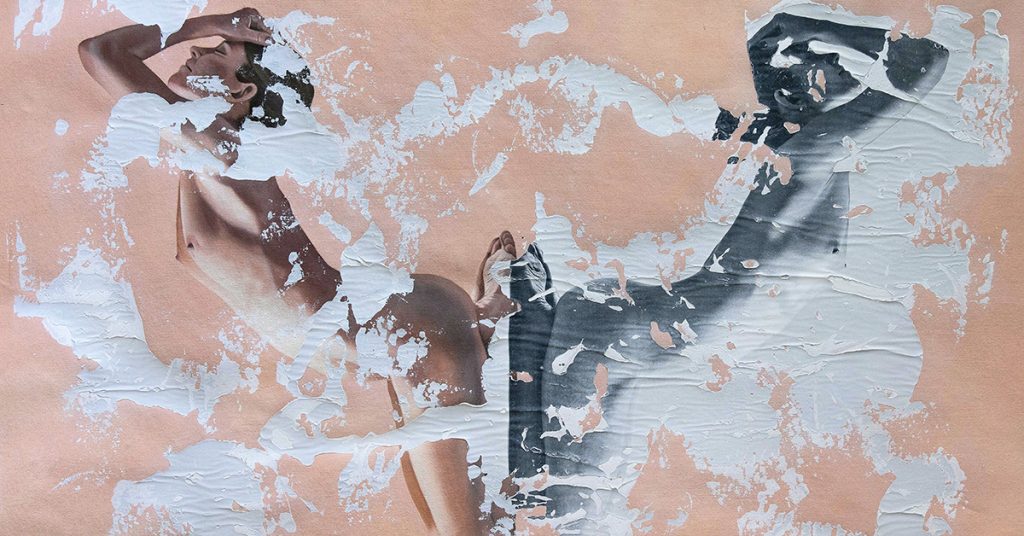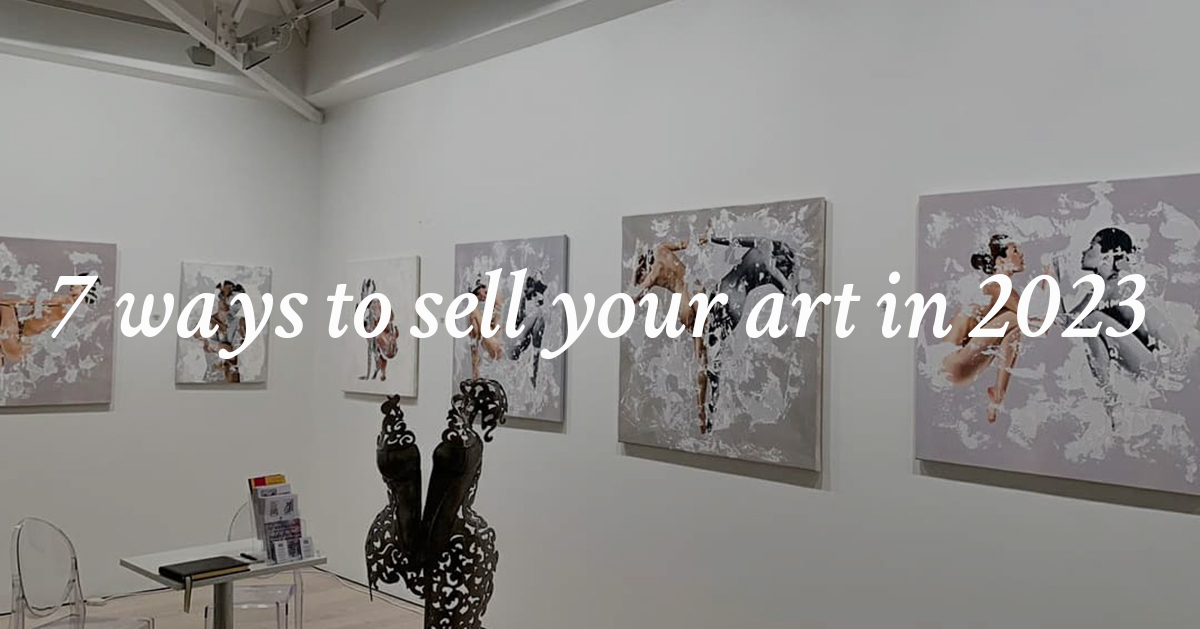
Introduction
Making a living as an artist can be a fulfilling and rewarding career path, but it can also be challenging. However, with the right strategy and approach, artists can make a living doing what we love. The purpose of this article is to explore seven different categories of ways for artists to make money while still alive, providing artists with a career planning tool and inspiration.
The following are 7 different ways to sell your art and knowledge as an artist in 2023, whether online or offline there are multiple things you can start implementing today in order to start making money selling your art. I personally have been doing some of them during the last few years and can guarantee that if you work hard you can start a successful art career and live from what you love.
- Sell Original Art
- Sell Art Prints
- Sell NFT´s
- Sell Art Commissions
- Sell Your Art as Merchandise
- License your Art
- Sell Yourself and not your Art
This article will provide a comprehensive overview of each of these categories, including tips and strategies for success, this article is designed to help you find the method that works best for you. With dedication, hard work, and persistence, it is possible to make a living as an artist while staying true to your style and artistic practice.
1. Sell Your Original Art
First and more obvious way to make money with your work is by selling original artworks, which can be a great source of income for artists. These days there are two basics ways to sell original artworks:
Sell Original Art Offline

Selling original art in person can be an excellent option for artists. It allows potential buyers to see the artwork in person and connect with the artist. Some tips for selling original artworks physically are:
Participate in art fairs, festivals, and exhibitions
These events can provide a platform to showcase your art and interact with potential buyers. It’s important to research and choose the right event that aligns with your style and target audience.
Approach art galleries
Many art galleries are interested in showcasing and selling original artworks. You can contact comercial art galleries that represent artists with a similar style and subject matter as yours.
Price your artwork correctly
It’s important to research the pricing of artworks similar to yours and price your artwork competitively. It’s also essential to take into account the cost of materials, labor, and overhead expenses.
Pro tip: you can organize studio open doors every once and a while, for instance once a month. This is a great way to connect with potential customers, you can tell them about your artistic process, and your sources of inspiration. Also people love not only seeing the artworks but the place where they are created. For sure, one of the best ways to meet interesting people and sell your art.
Sell Original Art Online
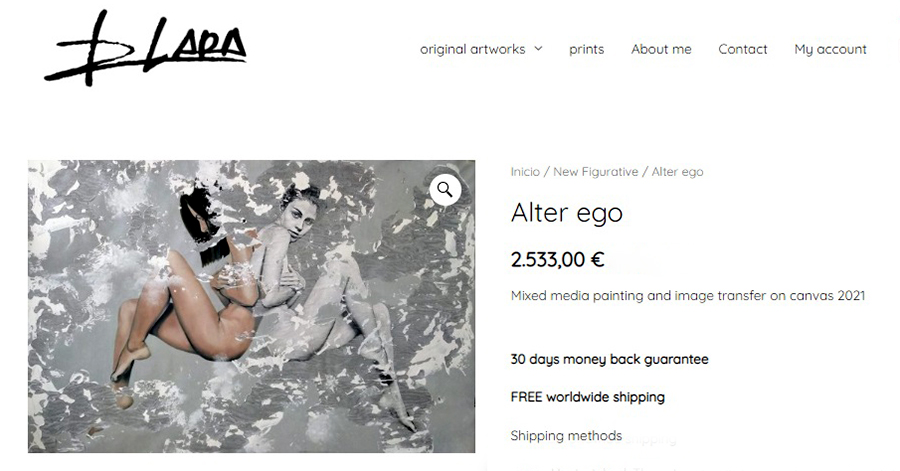
These days thanks to the internet it’s unbelievable the amount of opportunities that you have to sell your art online, imagine how it should have been for artists in the past to reach new collectors. That’s why this can be a convenient way for artists to reach a broader audience and sell their artwork globally. Here are some tips for selling original artworks online:
Use a trusted online art store
There are various online marketplaces like Artfinder, Singulart, Etsy or Saatchi Art, here is a more in depth article on how to sell your work on saatchiart, where artists can showcase and sell their original artworks. It’s important to research and choose an art marketplace that aligns with your style and target audience.
Photograph your artwork correctly
It’s crucial to photograph your artwork professionally with proper lighting and angles to showcase the artwork’s true colors and details.
Price your artwork correctly
Similar to selling artworks in person, pricing your artwork competitively is crucial when selling online. You also need to take into account the cost of shipping, handling, and transaction fees in order to sell your art in a profitable way.
By selling original artworks, artists can create a steady stream of income and reach a broader audience.
2. Sell Your Art Prints
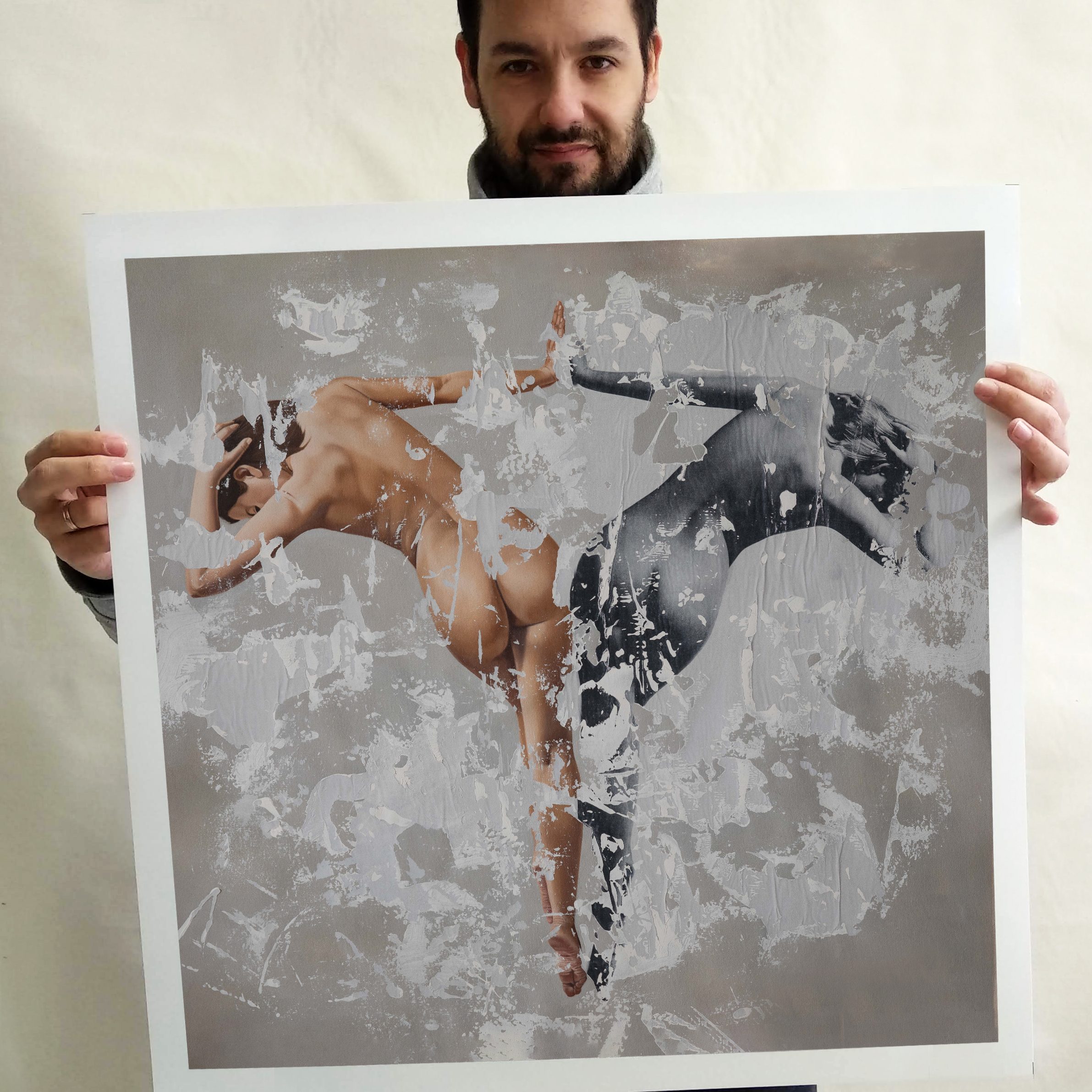
Selling prints of original artwork is an excellent way for artists to generate income while still preserving the original creations. When it comes to selling art prints it’s important to know that there are two types of art prints that artists can offer to customers, open edition prints and limited edition prints.
Open edition prints
Open edition prints are reproductions of an artwork that can be printed in any quantity. These prints are not limited and can be sold over and over again, making them a great option for artists looking to make a steady income. However, since there is no limit to the number of open edition prints, they may not be as valuable to collectors as limited edition prints.
Limited edition prints
Limited edition prints, on the other hand, are a set of prints that are produced in a specific, limited quantity. For example, an artist may decide to create a limited edition run of 50 prints. Once those 50 prints are sold, the artwork will no longer be available as a print. Limited edition prints are often numbered and signed by the artist, adding to their value and collectability. As a result, they can be sold at higher prices and are more valuable to collectors.
Pro tip: Including a certificate of authenticity for limited edition prints is something that customers appreciate and it gives an extra value to your print series.
Creating Art Prints
You can create art prints at home, or you can use printing services that specialize in producing high-quality prints. To create prints at home, you will need a printer and special paper. You can purchase inkjet or laser printers, depending on your budget and printing needs, if you sell a lot of them it might be profitable. The paper used for printing art prints is typically thicker and higher quality than standard printer paper. You can also consider outsourcing the printing process to a professional printing service, which can provide better quality prints with a wider range of paper types and sizes.
Print-on-Demand Services
Print-on-demand services, such as ICanvas, Redbubble or Society6, offer artists a way to sell their art prints. Also some online art galleries offer the option together with original artworks to sell open edition prints as Saatchiart or Artfinder. These services handle the printing, shipping, and customer service, which allows artists to focus on creating new designs. Additionally, these services typically do not require artists to hold inventory or pay upfront costs, as the prints are created only when they are ordered by customers. This makes it an ideal option for artists who are just starting out and want to test the market for their artwork without investing in inventory or overhead costs.
Advantages of Selling Art Prints
Selling art prints can be a great way for artists to generate income while still preserving their original artwork. It allows them to create multiple copies of their designs and sell them at a more affordable price than original artwork. Art prints can also be sold in various sizes, making them more accessible to a wider range of customers. Additionally, selling prints can be a way for artists to promote their original artwork and gain more exposure for their work.
Pro tip: you can make giveaways on Instagram by offering a free art print, this way you can get more exposure and reach more potential customers for a really chip price.
3. Sell NFT´s

Sell you art as an NFT, or non-fungible token, is something that has become a popular option for artists in recent years. NFTs are digital assets that are unique and cannot be replicated, making them a valuable investment for collectors. Here are some steps to consider when selling art as an NFT:
Create a digital wallet
To buy and sell NFTs, you’ll need a digital wallet to store and spend your cryptocurrencies. OpenSea is one of the largest NFT marketplaces out there and has a list of wallets compatible with the platform.
Mint your NFT
Once you have your wallet set up, you can create your NFT and mint it on a marketplace. Minting is the process of verifying your artwork as unique and making it available for purchase as an NFT. Some popular marketplaces for NFTs include OpenSea, Rarible, SuperRare, Foundation, and Nifty Gateway.
Price your NFT
When you list your NFT for sale, you’ll need to decide on a price. You can choose to sell your NFT through an auction or set a fixed price. It’s important to research the market and see what similar NFTs are selling for to determine a fair price for your artwork.
List your NFT
Once you’ve set your price, you can list your NFT on the marketplace of your choice. Each marketplace has its own process, but generally, you’ll need to upload your artwork and provide a description of the piece. You can also choose whether to sell the NFT as a one-of-a-kind original or as part of an edition.
Promote your NFT
To increase the visibility of your NFT, it’s important to promote it on social media and other online channels. Many NFT marketplaces offer promotion and advertising services as well. It’s also important to participate in the NFT community, connecting with other artists and collectors and attending NFT events.
While selling art as an NFT can be a lucrative opportunity for artists, it’s important to do your research and understand the market before getting started. As with any investment, there are risks involved, so it’s important to approach NFT sales with caution. Additionally, it’s worth noting that the legality of reselling an artist’s NFTs is still a developing area of law, so it’s important to stay informed on any legal developments in the field.
Pro tip: It might be interesting to use AI platforms as Midjourney or Stable Diffusion to create variations of your work or even new lines of expression and sell them as NFT
4. Sell Art Commissions
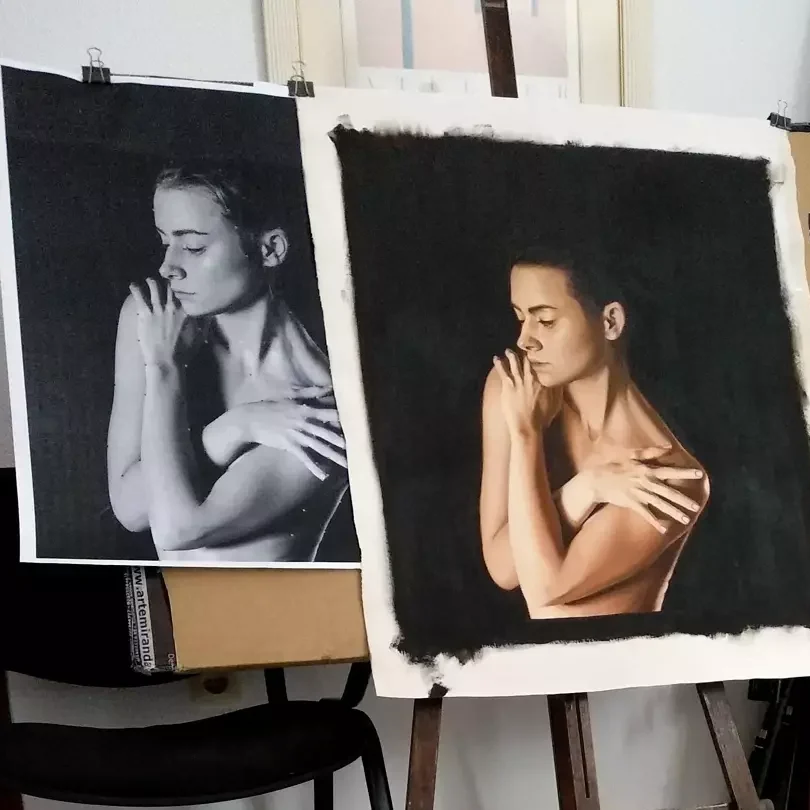
As an artist, taking on commission work is a great way to not only generate income, but also to expand your portfolio and improve your skills. However, it can be a daunting task to create a piece of art that meets a client’s expectations. Here is a step-by-step process that may help when making a commissioned piece of art, as well as some extra tips to keep in mind.
Step 1: Discuss the Project
The first step in making a commission piece is to have a discussion with the client about their project. This conversation should include details such as the subject matter, the style, the size, the deadline, and the budget. Make sure to ask plenty of questions and take detailed notes to ensure that you have a clear understanding of the project’s requirements.
Step 2: Provide a Proposal
Once you have gathered all the necessary information, it’s time to provide a proposal to the client. This proposal should include a rough sketch or mock-up of the artwork, an estimate of the project’s cost, and a timeline for completion. It’s important to be transparent about your pricing and turnaround time to avoid any misunderstandings or miscommunications.
Step 3: Refine the Concept
After the client has approved the proposal, it’s time to start refining the concept. This may involve creating a more detailed sketch or mock-up, selecting reference images or colors, or experimenting with different techniques or materials. Keep the client updated on your progress and be open to feedback or revisions.
Step 4: Create the Artwork
Once the concept has been finalized, it’s time to start creating the artwork. Make sure to follow the agreed-upon timeline and communicate any unexpected delays or issues with the client. Provide regular updates and progress shots to keep the client informed and engaged in the process.
Step 5: Finalize the Artwork
Once the artwork is complete, it’s time to finalize it. This may involve adding finishing touches, signing or framing the piece, or preparing it for shipping or delivery. Make sure to provide the client with a final preview and obtain their approval before proceeding.
Extra Tips
- Be clear and concise in your communication with the client.
- Be honest about your limitations and expertise.
- Set realistic expectations and timelines.
- Take a deposit or partial payment upfront to secure the project.
- Use a contract to protect both yourself and the client.
- Don’t be afraid to ask for help or advice if needed.
- Make sure to properly package and protect the artwork during shipping or delivery.
By following these steps and tips, artists can successfully navigate the commission process and create a piece of art that both they and their clients are proud of.
5. License Your Art
Licensing your art is an excellent way to earn income and sell your art by allowing others to use your creations in various ways. Not only does it provide a stream of revenue, but it also helps to increase your visibility as an artist. Licensing agreements can take many forms, from granting permission to use your artwork in a book or on a website, to selling the rights to your artwork for use in advertising or merchandise. When negotiating a licensing agreement, it’s important to consider the specific use of the artwork, the length of time the license is valid, and the compensation you will receive.
Working with editorials is a popular method for artists to license their work. There are many magazines, newspapers, and online publications that are interested in using original art to illustrate their content. To get started, artists should research and identify publications that align with their style and target audience. Then, they can reach out to the publications to inquire about the submission process and terms of compensation for licensing.
In addition to protecting your rights as an artist, it’s also important to register your artwork with a copyright office to further safeguard your intellectual property. Ultimately, licensing your artwork can be a valuable source of income and exposure for artists. Personally, I have had the privilege of working with editorials multiple times and seeing my work used as a cover on books and magazines is a truly gratifying experience.
6. Sell Your Art as Merchandise

Selling merchandise is a great way for artists to monetize their art while also providing fans with a tangible way to support and show off their work. There are several types of merchandise that artists can sell, such as stickers, t-shirts, tote bags, phone cases, and more.
To start selling your art as merchandise, artists can either produce and ship the products themselves, or they can use print-on-demand services like Printful or Society6 to handle the manufacturing and shipping for them. These services allow artists to upload their designs and sell them on various products without having to worry about production, shipping, or inventory management.
When it comes to creating merchandise, artists should consider their target audience and the types of products that they would be interested in buying. They should also ensure that the products they sell are of high quality and that they feature their unique style and branding.
It’s worth noting that selling merchandise often requires a significant upfront investment and ongoing management. Artists should consider the costs of manufacturing, shipping, and marketing their products, as well as the time and effort required to manage their online store or work with a third-party provider.
Additionally, artists can consider partnering with companies or brands to create licensed merchandise, this can provide an opportunity for exposure to new audiences and potentially increase revenue.
Overall, selling merchandise can be a profitable and rewarding way for artists to share their work with the world and connect with their fans. By considering their audience and utilizing print-on-demand services, artists can create high-quality products and grow their business.
7. Sell yourself and not your art
This method is a bit different, as we will be discussing ways to sell your art by selling yourself, your knowledge, and your skills, rather than your artworks. Sharing your knowledge and demonstrating your techniques is something you can do in various ways and can be an excellent source of income for artists.
Teaching art classes
Teaching art classes is an excellent way for artists to share their skills and knowledge while also generating income. Some renowned artists even make workshops around the world, often organized by specialized third-party companies. These workshops provide an opportunity for artists to connect with a wider audience and share their expertise in a hands-on, immersive environment.
When it comes to teaching art classes, there are several steps artists can follow to create a successful experience for themselves and their students. The first step is to identify the type of class to teach and the target audience. Artists can choose to teach anything from basic drawing and painting techniques to more advanced skills such as printmaking, sculpture, or digital art. It’s important to consider the audience and their level of experience to ensure the class is appropriate and engaging.
Once the class topic and audience are identified, artists can start planning the logistics, such as the class schedule, location, materials needed, and pricing. It’s also essential to promote the class through social media, websites, and other relevant channels to attract students and increase visibility.
During the class, artists should aim to create a positive and engaging atmosphere while providing clear and constructive feedback to their students. It’s crucial to be prepared with a lesson plan and to have a flexible approach that can adapt to the needs of each student.
Finally, after the class is complete, artists should ask for feedback from their students to improve their teaching skills and create a better experience for future classes.
Teaching art classes is a great way to share your knowledge while also earning some income. There are several ways to teach art classes, including online art classes, in-person classes at your studio or in a rented space and workshops or masterclasses.
Online art classes
Online art classes are a popular choice because they can reach a wide audience and are flexible in terms of scheduling. You can create a course that covers a specific topic or technique and sell it through online platforms such as Udemy, Skillshare, or Teachable. These platforms also provide tools to create and upload course materials, and you can earn money through course sales or monthly subscriptions.
Also you can use video editing software to create a comprehensive course on a specific topic, such as drawing, painting, or digital art on your own and then sell it through your website or online platforms such as Vimeo.
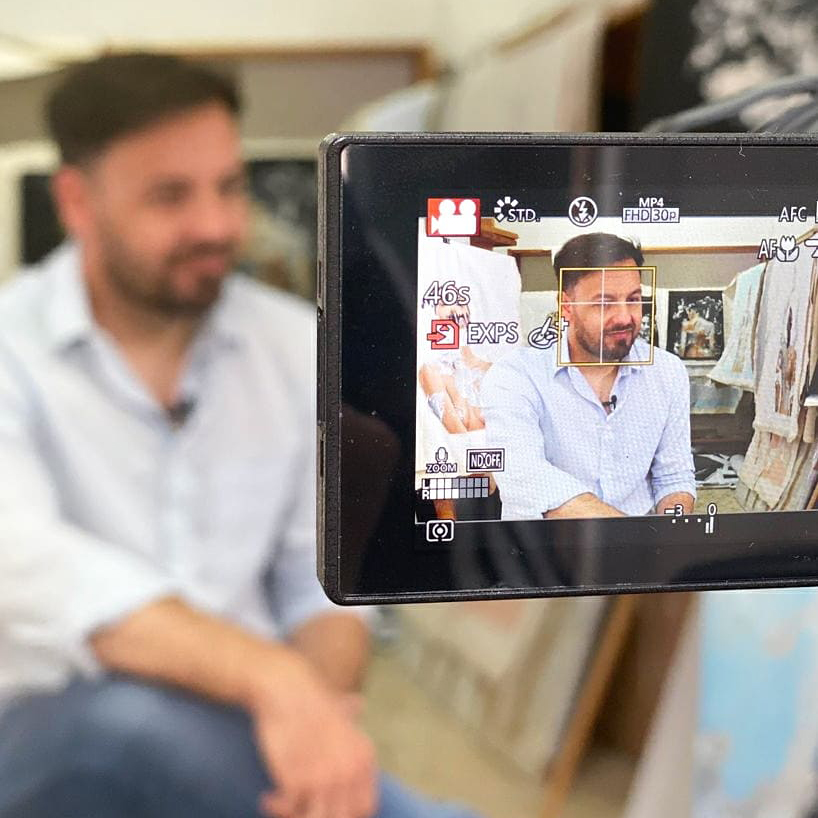
In-person art classes
Teaching in-person classes at your studio or a rented space is another option. This is a great way to build a local following and create a community around your art. You can advertise your classes through social media, flyers, and word of mouth. Consider offering classes on a regular schedule, such as once a week or every other week, to build a consistent group of students.
Workshops or masterclasses
Workshops or masterclasses are another way to teach art. These usually take place over a full weekend and are geared towards a small group of around 20 people. Renowned artists often organize these workshops around the world, usually organized by third-party companies specialized in organizing these events. Workshops offer an immersive learning experience and the opportunity to learn directly from experienced artists.
Teaching art classes can be a great way to supplement your income as an artist while also sharing your skills and knowledge with others. Whether you choose to teach online, in-person, or through workshops, there are many ways to make your teaching experience both rewarding and profitable.
Conclusion
In conclusion, as an artist, there are many ways to monetize your skills and create a sustainable income. By diversifying your income streams, you can increase your earning potential and reach a wider audience. Some options include selling your original artwork, creating and selling prints, licensing your work, selling merchandise, and teaching art classes. It’s important to consider which methods align with your goals and skill set, and to be open to exploring new opportunities. With dedication and creativity, you can turn your passion for art into a successful career.





